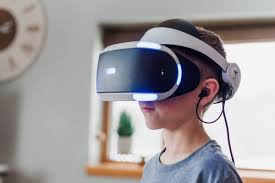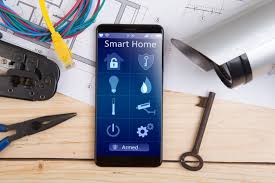We’ve all heard the phrase “history comes alive,” but let’s be honest—most of us have spent history class staring at grainy textbook images and memorizing dates we forgot the second the exam was over. History should be thrilling so you can start learning history through VR. It’s the story of human triumphs, failures, revolutions, and discoveries. Yet, somewhere between dusty pages and dimly lit lecture halls, the magic often fades.
Enter Virtual Reality (VR)—a technology that’s quietly redefining how we experience the past. You no longer have to imagine what it was like to stand on the deck of the Titanic, witness the signing of the Declaration of Independence, or walk the streets of Ancient Rome. With VR, you can be there.

And no, you don’t need a time machine, a DeLorean, or a lightning bolt hitting a clock tower—just a VR headset and the right experience. Let’s explore five powerful ways learning history through VR transforms the past into something you can feel, see, and almost touch.
1. Immersion That Beats Any Textbook
One of the biggest challenges in learning history is bridging the gap between facts and feelings. You can read that the Berlin Wall fell in 1989, but that’s just information. VR gives you experience.
Imagine putting on a headset and suddenly standing in a crowded Berlin street. You hear people cheering, see the wall crumbling before your eyes, and feel like you’re part of history. That level of immersion makes events stick—not because you memorized them, but because you lived them.
Research backs this up: immersive learning has been shown to improve knowledge retention by up to 75% compared to traditional methods. When you’re emotionally and visually engaged, history transforms from something you study to something you remember naturally.
2. Access to Rare and Lost Worlds
Traveling to historical sites is incredible—if you can afford it, have the time, and the place still exists. But what about the wonders that are gone? The Library of Alexandria, the Colossus of Rhodes, or entire cities like Pompeii before the eruption?
VR can rebuild these worlds with stunning accuracy. Historical records, archaeological data, and artistic reconstructions combine to create detailed environments that you can explore freely.
For example, VR recreations of the Colosseum in Rome don’t just show you an empty stone arena—they let you watch gladiator games, hear the roar of the crowd, and see the market stalls outside. These experiences aren’t just entertainment—they’re windows into places that no longer exist.
3. Learning Through Active Participation
We often treat history like a spectator sport—you watch, you read, you listen. VR changes that. Suddenly, you’re in the story, and that means you can interact with it.
In a VR history simulation, you might:
- Negotiate as a diplomat during the Cuban Missile Crisis.
- Walk alongside civil rights marchers in 1963.
- Help build the Great Wall of China.
This active participation engages your brain differently than passive learning. You’re making decisions, noticing small details, and connecting cause-and-effect in ways a static lesson can’t provide.
For younger learners, this turns history into a game-like challenge, making it far more appealing than another hour of note-taking.
4. Breaking Down Cultural and Geographic Barriers
One of the most beautiful things about VR is its ability to create empathy. When you stand in someone else’s shoes—even if they lived centuries ago—you understand their world more deeply.
For example, a VR journey through the Trail of Tears doesn’t just show you a map of the forced relocation of Native Americans. It lets you walk alongside families, hear their conversations, and feel the weight of their journey. Suddenly, this isn’t just a paragraph in a book—it’s a human story.
This kind of immersive cultural connection makes history more inclusive, giving voice to perspectives often missing from mainstream narratives. It can challenge stereotypes, deepen understanding, and encourage critical thinking about the present.
5. Making Education Future-Proof
The future of learning is personalized, interactive, and engaging—and VR checks all those boxes. By integrating VR into history education now, we prepare students for a world where digital literacy is as important as traditional literacy.
Teachers can adapt VR lessons to different learning speeds, styles, and interests. A student fascinated by medieval history can explore castles and battlefields in 3D detail. Another who loves art can walk through the Sistine Chapel as Michelangelo paints the ceiling.
And here’s the kicker: VR isn’t replacing teachers—it’s empowering them. Educators can guide discussions, provide context, and encourage debate after the experience, turning “wow” moments into meaningful learning.
But Is VR History Perfect?
Not quite. Like any educational tool, VR has its challenges. Accuracy is critical—if the digital reconstruction is wrong, students may walk away with misconceptions. There’s also the issue of accessibility—not every school or household can afford VR headsets.
However, as technology becomes more affordable and content creation more democratized, these barriers are shrinking. Open-source VR history projects are emerging, and many museums now offer virtual tours for free making learning history easy.
How to Get Started with Learning History Through VR
You don’t need to be a tech wizard to begin. Here’s a quick starter guide:
- Choose Your Platform:
- Oculus Quest / Meta Quest for a standalone experience.
- HTC Vive or Valve Index for high-end visuals (requires a gaming PC).
- Mobile-based VR like Google Cardboard for budget-friendly options.
- Pick the Right Experiences:
- Titans of Space for ancient astronomy.
- Rome Reborn for exploring Ancient Rome.
- Anne Frank House VR for a powerful, human perspective on WWII.
- TimeLooper for time-travel experiences in cities worldwide.
- Blend VR with Traditional Learning:
Use VR as the spark, then dive deeper with books, documentaries, or discussions. The headset gives you the “wow,” but the reflection cements the learning. - Take Notes After Each Session:
You’ll remember more if you jot down key moments and how they made you feel. Over time, this becomes your personal time-travel journal.
The Emotional Side of VR History
The most surprising thing about VR history isn’t the visuals—it’s the feelings. Many people describe getting chills, tearing up, or feeling a deep sense of connection while inside a simulation.
When you walk through the trenches of WWI, you hear the wind, see the mud, and feel the claustrophobic walls around you. That emotional punch isn’t something you can get from a bullet-point summary in a textbook.
These experiences remind us that history isn’t just about “what happened”—it’s about what it meant to the people who lived it. And when you feel that, you carry it with you.
The Future of Time-Travel Education
VR is still in its early days, but the possibilities are endless. Imagine:
- AI-driven historical characters who respond to your questions in real time.
- Massive multiplayer VR where students from different countries explore history together.
- Integration with haptic suits so you can “feel” textures like Roman cobblestone streets or a samurai’s armor.
In many ways, VR isn’t just a tool for learning history—it’s shaping the future of how we tell stories, preserve culture, and connect generations.
Final Thoughts
Learning History is too important to be left as something we merely memorize. It’s the foundation of who we are, the mistakes we’ve made, and the triumphs we’ve celebrated. VR offers a way to experience history not as a distant subject, but as something living, breathing, and deeply human.
So next time someone says “you can’t change the past,” smile and hand them a VR headset. You can’t change it—but you can visit it, learn from it, and bring a piece of it back with you.
And that’s the closest thing to time travel we’re ever going to get—no flux capacitor required.





